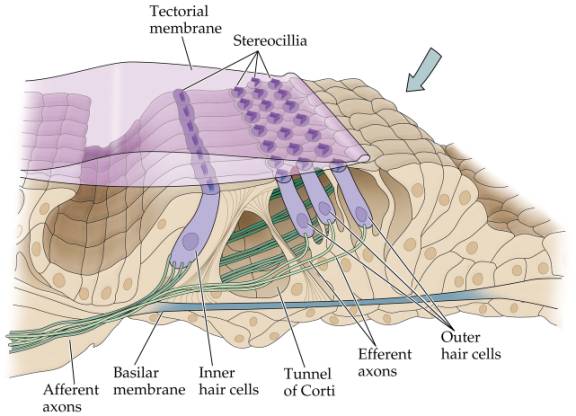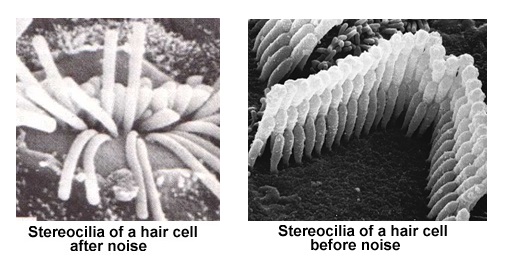4.1.11 What is the Organ of Corti?

The organ of Corti is the hearing organ which lines the spiral-shaped cochlea.
The hearing organ, known as the organ of corti, is inside the membranous tube called the scala media, (or the tunnel of Corti) which lies around the cochlear spiral.
The organ of Corti consists of a base membrane, called the basilar membrane, and mounted upon it are many rows of hair cells which are connected to the auditory nerve.


The hair cells are tonotopic, meaning each of them is tuned to a different frequency, or pitch. Therefore, if a certain group of hair cells is damaged, it reduces our hearing at a particular frequency or pitch.
The basilar membrane is stiffer at the base and is more flexible with more mass at the apex. The cells which detect the high frequencies are at the base of the cochlea, the widest part of the canal, while the ones near the apex respond to lower frequencies.

There are two types of hair cells, known as inner hair cells and outer hair cells. There are three rows of outer hair cells and one row of inner hair cells.
The Outer hair cells act as amplifiers to raise the loudness of very soft sounds.
The inner hair cells are primarily sensory cells so their role is to detect the sound and transmit it to the brain.
As sound waves vibrate the basilar membrane, causing it to move up and down, the hair bundles are moved from side to side. This displacement of the hair bundles triggers the chemical response which sends signals along the auditory nerve.
The pitch and loudness of the original sound signal determine the exact location and the number of hair cells which are activated on the organ of Corti.
Movement of the stereocilia produces an exchange of potassium ions and calcium ions. This then causes the release of a neurotransmitter which then triggers an action potential which in turn sends the signal up the auditory nerve.

